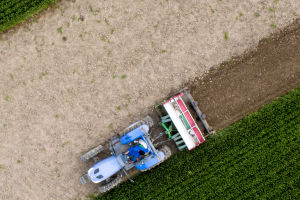Plastic pollution has become a significant environmental issue worldwide, and eco-friendly plastics are increasingly gaining attention as a possible solution.
Eco-friendly plastics are those that have a minimal impact on the environment, are safe for human beings, and can be recycled or biodegraded.
There are several types of eco-friendly plastics available, depending on their degradation methods and raw material sources. This article will delve into the different types of eco-friendly plastics and their applications, as well as the differences between eco-friendly and degradable plastics.
One type of eco-friendly plastic is photodegradable plastics. These plastics decompose under ultraviolet or visible light irradiation, such as polyethylene (PE) and polypropylene (PP).
Biodegradable plastics are another type that can completely decompose into non-toxic substances under the action of microorganisms.
Examples of biodegradable plastics include polylactic acid (PLA) and polycaprolactone (PCL).
Marine eco-friendly plastic is a new type of plastic made from waste plastic collected from the ocean, such as the marine eco-friendly plastic promoted by NextWave Plastics.
Eco-materials made from renewable resources, such as wood fiber, spider web silk, and crustaceans, are also becoming increasingly popular.
Although eco-friendly plastics and degradable plastics share similar characteristics, there are significant differences between them.
Eco-friendly plastic is a broad concept that includes degradable plastic and common plastic that can be recycled.
In contrast, degradable plastic is a narrow concept that only includes special plastic that can decompose and disappear in nature.
Eco-friendly plastics may not always decompose and disappear in nature and may require professional treatment to achieve recycling.
In contrast, degradable plastics can be completely decomposed into non-toxic substances by microorganisms or light within a certain period.
The price and performance of eco-friendly plastics are not much different from ordinary plastics, and some are even cheaper and more durable than ordinary plastics.
Biodegradable plastics, on the other hand, are more expensive and more prone to deterioration than ordinary plastics and do not have advantages in application scenarios where they are used for a long time and are difficult to sort and recycle.
Plastics are widely used in daily life and can be categorized into packaging, living utensils, building materials, and electrical and electronic products.
Packaging products, such as food packaging bags, beverage bottles, courier bags, cling film, and straws, are usually used for a short time, are difficult to recycle and separate, and are easy to cause environmental pollution.
Living utensils, such as storage boxes, stools, chairs, brushes, hangers, buckets, mouth cups, basins, and sealing jars, are usually used for a long time, easy to sort and recycle, but also take up space and resources.
Building materials, such as plastic pipes, doors, windows, and flooring, usually have the characteristics of lightness and durability but also affect the beauty and comfort of the building.
Electrical and electronic products, such as cell phone cases, keyboards, mice, and remote controls, usually have good insulation performance and appearance design but also produce electronic waste and harmful substances.
Eco-friendly plastics have significant potential to reduce plastic pollution and environmental damage.
By choosing eco-friendly plastics over traditional plastics, individuals and companies can contribute to a cleaner and healthier planet.
However, it is crucial to understand the differences between eco-friendly and degradable plastics and choose the appropriate type of plastic for specific applications.


